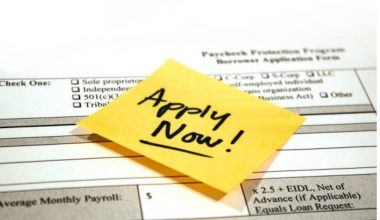As a new business owner, microloans are the type of loan you should be considering. This type of loan will serve as a means of getting the funds you need to make your business grow. However, you might wonder, “How do microloans work?” Therefore, in this article, you will find useful information you need to know about microloans, and how they work. Meanwhile, this article also contains all you need to know about microloans for small businesses. And as well as how you invest as an investor and how you can apply for a loan as a new business owner. So, take your time to read through to the end, as there is so much to benefit from this article, including microcredit. Just like invoice factoring is a means to raise funds for businesses, so also are microloans. Now, let’s go further in explaining more on this topic. But first, what are microloans?
Micro loans Definition
Microloans are the type of loans always considered to be small loans, lent by an individual to new businesses. It is also a small loan at low interest known as “microcredit.” Mainly, microloans are issued by a single individual or a group of individuals rather than banks or credit unions. The number of these individuals as the case may be, each always contributes a portion to the total amount of the money.
Moreover, in countries, where traditional financing is not available, such as in third-world countries, is where microloans or microcredit are often given to people. This helps them in starting up a small business with the loan. Though the lenders get interested in their loans, at a low-interest rate, this makes microloans good for small businesses. Because microloans are not mainly backed up by collateral, is kinda risky to the lenders. Meanwhile, the lender is likely to get part or no refund of his loans if the borrower defaults.
As part of five big grants for small businesses, microloans serve as a means to help the poor start a small business. Also, help lend to individuals in developed countries who cannot obtain credit from the bank due to a bad credit history. Nevertheless, Lending Club and Prosper are two big companies mainly known for microlending which is the same as microloans. Lenders always issue this kind of loan to the borrower they are very sure will pay back with the interest rate. This is because microloans are not always guaranteed because they are typically not backed by any sort of collateral. Note, microloans are also a peer-peer kind of financing for new business startups.
Read Also: Sources of Finance: A Foolproof List For Small Businesses and Entrepreneurs.
How Does Micro loans Work?
Microlending organizations facilitate small business loans from individuals to small businesses and new startups. Investors who want to offer microloans for startup businesses choose their preferred online platform and look for microlending opportunities on the website. This is just the way microloans work.
Each potential borrower receives a credit rating. The lending platform calculates this using their real-world credit history. Also through any assets they own and their commitment to repay any previous microfinance they borrowed through the same site. However, the result is a rating system that identifies high-risk applicants and those most likely to repay in full and on time.
There is always less security in microfinance investing than there is in traditional bank loans. So, the interest rates paid by the borrower tend to be higher. For example, an interest rate of 6% is typical for the cheapest microloans, rising to more than 30% for borrowers with the worst credit rating.
Business owners can access low-interest rates by presenting to be a safer prospect to microlending investors in the following ways below. Meanwhile, all of these options show good stewardship of money and in particular, effective management of debt.
- Improving their consumer credit rating
- Though no collateral needed but holding assets (e.g. a house) that can be sold to repay the loan is necessary
- Meeting repayments regularly to build up trust with the micro-lending site
See Also: Financial Goals You Can Set For 2023: The Complete Guide For Students and Businesses.
Micro Loans For Small Businesses
When considering the type of microloans to go for as a small business owner, it is good to start locally. First, learn all you need to know about microloans and how they can work for small businesses. Because most microlenders are tied with their local communities, accepting applications only from businesses within their region.
Moreover, microloans have limits because many microlenders depend on grants, public donations, and government guarantees. This, therefore, fluctuate the number of loans they offer to small businesses from year to year. Because microlending has proved to be a success, there are now many ways of funding small businesses.
Below are some of the best microloans suitable for small businesses:
#1. SBA Microloans
SBA microloans are basically for small businesses in the United States region. The program as administered by the U.S Small Business Administration (SBA) provides funds to businesses through community-based non-profit organizations. This is because the Government agency does not service funds directly to borrowers, so they use non-profit organizations.
In addition to providing these microloans, non-profit organizations provide management and technical assistance to small business owners. This assistance helps small businesses to grow successfully. Basically, there are three primary features of SBA microloans which include:
- A maximum amount of $50,000 to borrow.
- A maximum of six years of repayment terms.
- The interest rates depend on the lender but range generally from 7% to 13%.
In the year 2019, the average SBA microloans were about $14,735 with a 7.5% interest rate. Normally, applying for SBA microloans must be through one of the local intermediaries. However, you can find these intermediaries via your local SBA District Office to get started.
Read Also: Simple Business Plan Example (500+ With Free Guide).
#2. Accion USA
Accion loans range from $500 to $50,000, this is for existing small businesses. These microloans are granted for use in working capital, operating costs, vehicle purchase, inventory purchase, equipment purchase, location changes, and marketing.
#3. Kiva
Kiva is a website that facilitates person-to-person microloans to entrepreneurs in other countries. It allows lenders to lend as little as $25 to help individuals start small businesses in other countries. To date, Kiva donors have lent more than 7.7 million dollars to small businesses.
#4. Opportunity Fund
This is a nonprofit microlender that offers a variety of microloans to small businesses. The loans can be used by businesses for working capital, equipment purchases, remodeling, and other business development expenses.
#5. Grameen America
Grameen America is a microfinance institution that makes microloans for low-income women entrepreneurs. They have so far issued more than $1 billion in microloans to more than 100,000 low-income women across the U.S. In order to work with Grameen America, there must be a group of four women. Basically, these women have to participate in a financial training seminar before they can obtain microloans from Grameen America.
#6. Lending Club & Prosper
These microlenders are two different but similar organizations. They are both peer lending sites suitable for granting microloans to small businesses. Lending can borrow up to $35,000 to small business owners while prosper borrow up to $25,000. Each of these microlenders required borrowers to have a credit score of at least 640 and 660 respectively. This saves borrowers the stress of hassle and expense of going through traditional lenders. Meanwhile, investors can see a return of 9 percent or more.
Read Also: 5 Things You Must Do Before Starting a Business
Micro Loans In Developing Countries
Microloans have connected groups of poor individuals to lending institutions or affluent individuals in developed countries. These type of loans has also been able to foster the strengthening of local economies. It is no doubt necessary for consuming life-improving technology while incurring minimal risk to the lending party.
Criticisms of microloans both non-profit and for-profit models appear misguided. The reason, there are clear data demonstrating both a low incidence of default and modest interest rates. Moreover, its credit has been the foundation for modern economic growth. So, ethical lending to the Third World should therefore not be denied, but rather intensified through the faculty of microlenders.
For a period of time from the 1980s to the early 2000s, microloans were all the rage in international development. The idea was simple enough giving a very small loan to an individual living in a poor country. This could help them expand a small business, which would lift their family out of poverty. After the loan is paid back, the money can be cycled to more borrowers, getting more families out of poverty. Therefore, microloans have played a vital role in developing countries economies and have lifted so many from grass to grace.
See More: Finance Companies: Best Picks For Any Business.
Micro Loans That Pay Interest
Microloans always come with interest, but this interest rate varies depending on the lender. Because interest rates are high, lenders stand to benefit greatly if they exercise discretion in their lending. Lenders can select which loans they want to fund. Basically, they have to request more information about the borrower before making a commitment.
Moreover, just one microloan carries a huge risk, so lenders often allocate their investment across a portfolio of several microloans. Therefore, most borrowers will discover that more than one lender will fund their loans. Allocating the risk across various loans will protect lenders against losing their portfolio if a couple of their loans default.
Microloans Investing
When starting out with microloans lending or microloans investing you will have to test the waters first, knowing how microloans work and how you can invest. Remember, you don’t have to put all your life’s savings on the line. Although, you shouldn’t ever do this with any investment you make no matter how skilled an investor you are. Instead, microlending might be just the right solution for you to get familiar with microloans lending. But you have to gain invaluable experience before investing or increasing your investment in microlending.
Basically, investors who invest in microloans receive the principal as well as interest payments on a monthly basis; that’s the way microloans work. This usually adds to the compound interest effect. To break it down, if you decide to invest in microloans, you can reinvest your earnings and earn interest on your interest.
Read More: The Evolution of Marketing + Full Explanation.
The benefits of investing in microloans enable investors to invest with a minimum investment amount of €5. The low minimum investment amount means that, should you choose to invest in microloans, you will be able to broadly diversify your portfolio. And this will ultimately lower the default risk. But bear this in mind, when you invest your money in microloans, you help to fund unsecured consumer loans. This means that loans aren’t secured by any collateral that could be sold to repay your debt. This is in case the borrower is unable to pay back the loan. If the loan defaults, it will likely be sold to a debt collector. In this case, you might only receive part of your investment back.
Therefore, getting to know more about microloans and how they work will help you to decide if to invest or not. Because it comes with both advantages and disadvantages, but nevertheless, it’s worth investing in microloans.
Microcredit
Microcredit is a type of microloan given to individuals to help them establish a small business and stay self-employed. It also consists of programs that extend small loans to very poor people for self-employment projects. This helps them to generate income and allows them to care for themselves and their families. Therefore, is a good idea for investors to invest in microloans as it helps the average man in society.
In 1983 Yunus established the Grameen Bank. Which credited him with developing the concept and making microcredit a socially responsible and viable business model today. However, his motive is an attempt to combat the extreme poverty he witnessed in the rural areas of Bangladesh. The Grameen Bank focuses mainly on lending only to the poor. Individuals who had previously been denied access to credit as were considered high-risk borrowers.
The impact of microcredit can be measured in terms of the increase in the recipients’ economic power and social inclusion. Also in the reduction of their vulnerability to economic shocks. Meanwhile, it should be understood as a prodigious tool in the service of empowerment. The Grameen bank grants small loans to the less privileged in society without any form of collateral. Instead, the bank used a form of peer group pressure to help ensure that each person acts in a fiscally responsible way. Each borrower is expected to be part of a five-person group with other people in the community who also desired loans. These borrower groups capitalize on the idea of social capital that each of these poor communities had certain links. Also, they ensured that there are networks and modes of behavior that would encourage people to pay back their microcredit loans.
Read Also: Small Business Ideas List: The top 10 + free tips.
Therefore, Grameen has brought credit to the poor, women, and the illiterate. people who pleaded that they did not know how to invest money and earn an income. Grameen has also created a methodology and an institution around the financial needs of the poor. It has given the poor access to credit on reasonable terms to help them build on their existing skills. Meanwhile, help them also to earn a better income in each cycle of loans. However, thanks to microcredit (microloans) as a means by which Grameen Bank has extended its arms to the poor to start up a business.
How to Apply For Microloans
Small businesses interested in the Micro loan or microcredit program should first contact an intermediary microlender in their area. As discussed earlier, a microlender is a non-profit organization that receives a loan from the SBA and others. In turn, the microlender makes small loans to very small businesses in the community. The microlender also provides technical assistance to small businesses. Basically, the microlender makes all the credit decisions. The application process may vary depending on the intermediary lender and how microloans work for the business.
Secondly, there are other basic requirements every small business owner should possess in order to secure a microloan or microcredit. These requirements include:
- A government ID.
- Income proof document.
- Financial statements.
- Proof of what to do with the loan.
- A business plan.
- Investment in the business established.
- Collateral.
- A list of personal and professional references.
After your application has been received from the loan officer, he/she has to go through your documents to verify if they are genuine. Also, make inquiries on your business location and the nature of your business. Thereafter, the loan would be issued to you with a set of loan closing documents. But be sure that you fully understand the closing documents, especially the promissory note.
See Also: Income Bond: Definition and Detailed Explanation.
Also, know the details on the amount of the loan, interest rate, and maturity date of the microloan or microcredit. Finally, make sure you confirm the best way to reach your loan officer or other staff members. This is very important to know in case you have any further questions later. However, you should try your best to pay back the loan given to you in due time. Moreover, you need to learn some basic financial management in order to run your business well and be able to pay back the loan. Also, learn how microloans work and the type of microloans to apply at a given time.
What Are the Risks of Micro Lending?
By far the most significant risk is that the loan is not guaranteed. For a fundraising objective to be met, a lot of lenders must be interested in the possibility.
What Is Considered a Micro Loan?
The microloan program offers loans of up to $50,000 to assist small enterprises and non-profit childcare centers in starting up and expanding. The typical microloan is around $13,000 in value.
Are Micro Loans Good?
For some investors, microlending is a good investment. It allows you to diversify your income further, and microloans produce cash flow returns. Microloans frequently have better rates of return than traditional fixed-income investments.
What Can Micro Loans Be Used For?
A microloan can be used for working capital, inventory or supplies, furniture or fixtures, machinery or equipment, or real estate, depending on how the microlender is financed. They can’t be used to pay off existing debt.
Who Is Eligible for a Microloan?
SBA Microloans can be used for a variety of purposes, including working capital and the purchase of equipment, machinery, or supplies. If you require less than $50,000 in funding and have good credit and a great business plan, consider SBA Microloans.
What Are the Disadvantages of Micro Loans?
Microcredit has some drawbacks, including excessive loan repayment pressure, a high suicide rate among borrowers, and extreme debt levels. The high-interest rates on some microcredit loans, which can reach 30% or higher, contribute to the disadvantages.
How Long Does It Take To Get Approved for a Microloan?
It can take anywhere from 30 to 90 days to receive a microloan. Because your application must be approved by both an intermediary lender and the SBA, you must be patient while waiting for a microloan.
Conclusion
In the course of this article, I have discussed various ways in which poor people use financial services like microloans or microcredit to support their livelihoods. The way microloans work is awesome and beneficial to small businesses. Micro loan development has intervened in response to people’s demands within a specific location and beyond. So, is no doubt that microloans or microcredit has played an important role in reducing poverty. Big thanks to SBA, Grameen bank, and other micro-lending organizations.
Related Articles
- Microfinance Loans: Definition, Importance, History, Institutions (+ Loan details and Tips)(Opens in a new browser tab)
- SBA MICROLOAN: Overview, Lenders, Program, Requirements, Cares Act(Opens in a new browser tab)
- SMALL BUSINESS LOANS FOR WOMEN: Best 2023 Startup Options & Detailed Guide(Opens in a new browser tab)
- SBA LOANS Guide: How to Apply, Eligibility (+ Free easy tips)(Opens in a new browser tab)
- NEW BUSINESS LOANS: Loans For Startups and Small Business in the UK(Opens in a new browser tab)






